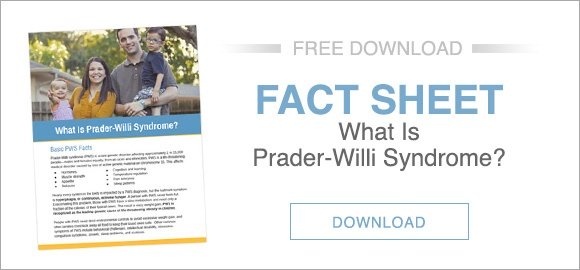The Foundation for Prader-Willi Research and the Angelman Syndrome Foundation are funding the world’s largest newborn screening study for four rare genetic disorders: Angelman, Prader-Willi, Fragile X and Dup15q syndromes. The Victorian Medical Research Acceleration Fund this year also contributed $100,000 toward the project.
In a pilot study, Associate Professor David Godler from the Murdoch Children’s Research Institute in Melbourne, Australia, will screen 75,000 newborns, establishing the feasibility of the test for large-scale screening.
“Newborn screening means families with loved ones with Angelman, Prader-Willi, Fragile X and Dup15q syndromes will find a diagnosis in weeks instead of years, avoiding a painful diagnostic journey. And, if we can diagnose individuals earlier, we have the best chance of reversing the effects and improving their quality of life much sooner,” says Eileen Braun, Executive Director of the Angelman Syndrome Foundation and mother to a young woman with Angelman syndrome (AS).
“Having a cost-effective test to accurately diagnose these syndromes in the newborn period is key to ensuring that families receive optimal medical care and support,” adds Theresa Strong, Director of Research Programs for FPWR. “The study will validate the newborn screening tool so that, once approved for use, it can be used to screen all babies in the newborn period.”
“This would allow individuals to have standard-of-care therapies right from the beginning,” says Dr. Jessica Duis, MD, MS, Director of the Comprehensive Angelman Syndrome and Prader-Willi Clinics at Vanderbilt University Medical Center. “For example, for Prader-Willi syndrome, this means growth hormones and early intervention therapies that we know from experience have huge benefits.”
Current rates of incidence of PWS and AS vary widely from 1:12,000 and 1:30,000 live births. The study will also help understand the true incidence and full spectrum of these disorders in the population.
“I believe the prevalence of these disorders is underestimated, because all tests used to diagnose these conditions were developed more than 10 years ago and are not as sensitive,” says Godler. The study was inspired by his previous work to develop a test called MS-QMA, which can accurately diagnose Fragile X syndrome, a common genetic disorder linked to autism spectrum disorder. With additional funding, he found the test could also be used to screen for PWS, AS and Dup15q.
“My dream is to one day have our tests included in newborn screenings around the world,” says Godler. “That means the families with babies with these conditions get the support and care they need from day one.”
Godler is also a member of the Paediatrics Department of the University of Melbourne. His Fragile X test is being trialed on samples of 100,000 babies, thanks to an earlier $800,000 Australian National Medical Research Council grant and a $500,000 Australian Federal Government’s Medical Research Future Fund fellowship awarded in 2015 and 2018, respectively.








